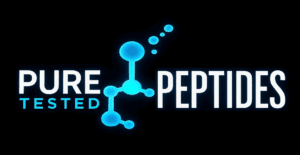GH Axis Research: GHRH Analogs and GHSR Agonists
Research-Only: Laboratory/academic use; not for human consumption.
Signal Initiation. Long-acting GHRH analogs such as CJC-1295 were engineered by targeted substitutions to prolong half-life while maintaining receptor activity (PMC: PMC2815023). Investigations demonstrated increased mean GH and IGF-1 with preserved pulsatility following CJC-1295 exposure (PMID: 16352683; PMID: 17018654). In knockout models, chronic administration normalized growth phenotypes (PMID: 16822960).
Secretagogue Selectivity. Ipamorelin is a selective agonist of the ghrelin receptor (GHSR-1a) that stimulates GH release with minimal ACTH/cortisol effects at high multiples of the ED50 (PMID: 9849822). Independent work profiled ghrelin mimetics across GI motility and energy intake models, supporting receptor-specific pharmacology (PMID: 19289567; PMC: PMC4863553; PMC: PMC7108996).
Downstream Pathways. GHRH–GHRHR coupling activates adenylate cyclase, increasing cAMP and PKA signaling with subsequent CREB-mediated transcription. Parallel GHSR signaling integrates with hypothalamic and pituitary circuits. Researchers quantify GH pulse amplitude/frequency, IGF-1 output, and receptor desensitization kinetics to compare analogs and combinations. Browse the full catalog.

Methodological Notes. To contextualize mechanistic observations, laboratories typically
report experimental temperature, buffer composition, biological replicates, and blinding/randomization
practices for image analysis and Western quantification. Where possible, orthogonal corroboration is
included: for example, receptor pharmacology by radioligand binding or BRET assays combined with
downstream second messengers; structural endpoints by both live-cell imaging and fixed immunostaining;
and bioenergetics readouts by oxygen consumption/ECAR coupled to targeted metabolomics. These practices
increase reproducibility and allow meaningful comparison across peptide classes and batches in research-only
settings (PMC: PMC7350483).
Statistics & Reporting. Typical analyses include power calculations, pre-registered endpoints,
and multiple-comparisons adjustments for families of tests. Effect-size reporting (Cohen’s d or Hedges’ g),
confidence intervals, and transparent outlier policies enable precise interpretation of receptor- or
mitochondria-targeted peptide experiments. Collectively, these design elements improve the signal-to-noise
ratio in bench studies and inform subsequent assay selection. Browse the full catalog.
